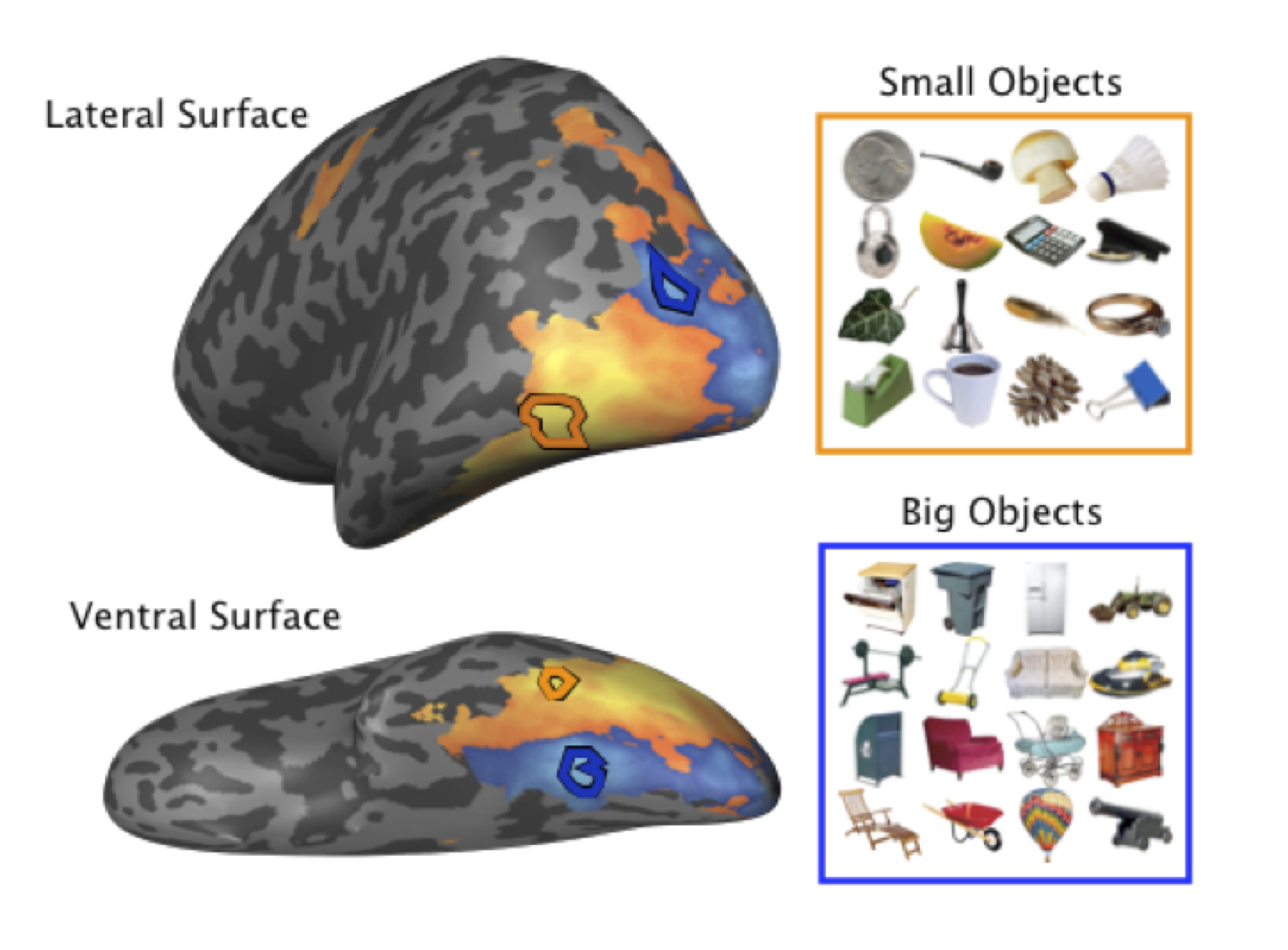The brain organizes objects by size: MIT scientists
June 22, 2012

Brain activations while participants view pictures of objects. Blue regions show where cortex is more active for big objects and orange regions show cortex that is more active for small objects. (Credit: MIT)
Researchers at the MIT Computer Science and Artificial Intelligence Lab (CSAIL) and Department of Brain and Cognitive Sciences have discovered that the brain organizes objects based on their physical size.
A specific region of the brain is reserved for recognizing large objects and another is reserved for small objects.
Their findings could lead to a greater understanding of how the brain organizes and maps information, and could have major implications for designing robots who think like humans.
“Prior to this study, nobody had looked at whether the size of an object was an important factor in the brain’s ability to recognize it,” said Aude Oliva, an associate professor in the MIT Department of Brain and Cognitive Sciences and senior author of the study.
“We pick up small things with our fingers, we use big objects to support our bodies,” said Dr. Talia Konkle, lead author of the paper. “How we interact with objects in the world is deeply and intrinsically tied to their real-world size, and this matters for how our brain’s visual system organizes object information.”
Large objects, they learned in an fMRI brain-scanning study, are processed in the parahippocampal region of the brain, an area located next to the hippocampus, which is also responsible for navigating through spaces and for processing the location of different places. Small objects are handled in the inferior temporal region of the brain, near regions that are active when the brain has to manipulate tools.
“Our findings could provide insight into developing better machine interfaces for robots,” said Oliva. “Paying attention to the physical size of objects may dramatically constrain the number of objects a robot has to consider when trying to identify what it is seeing.”
The research also suggests that the human visual system’s method for organizing thousands of objects may also be tied to human interactions with the world. “If experience in the world has shaped our brain organization over time, and our behavior depends on how big objects are, it makes sense that the brain may have established different processing channels for different actions, and at the center of these may be size,” said Konkle.